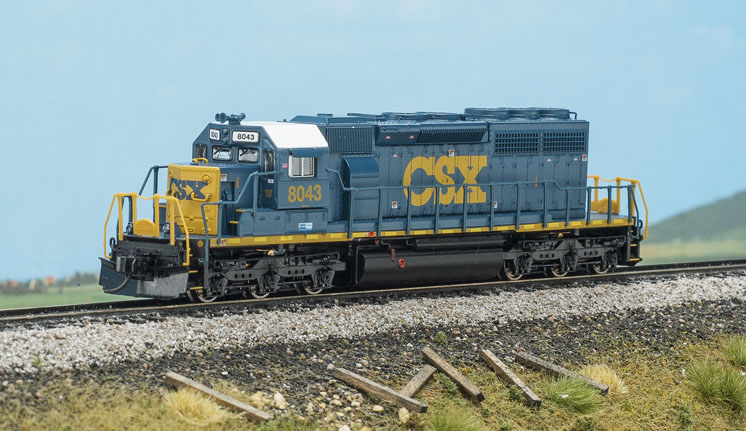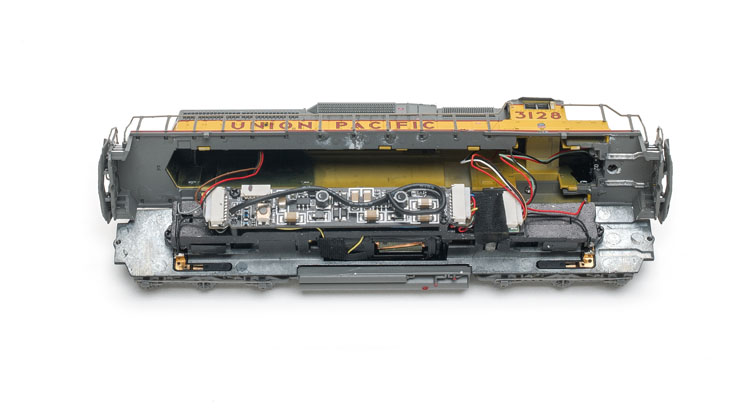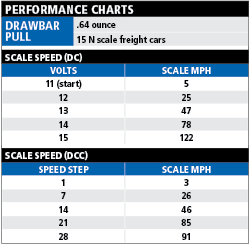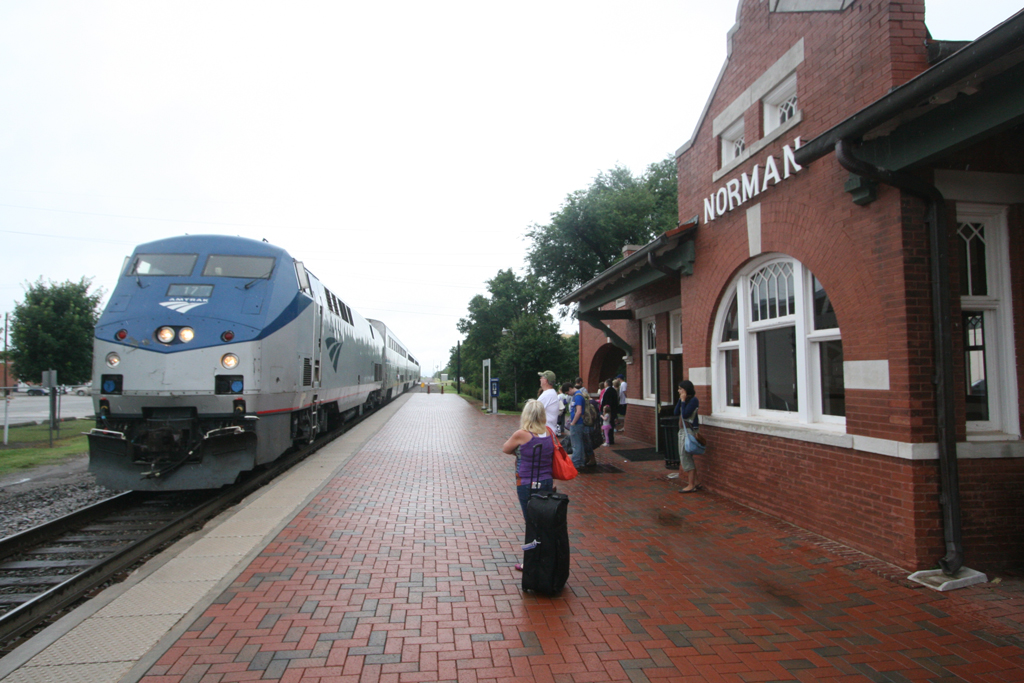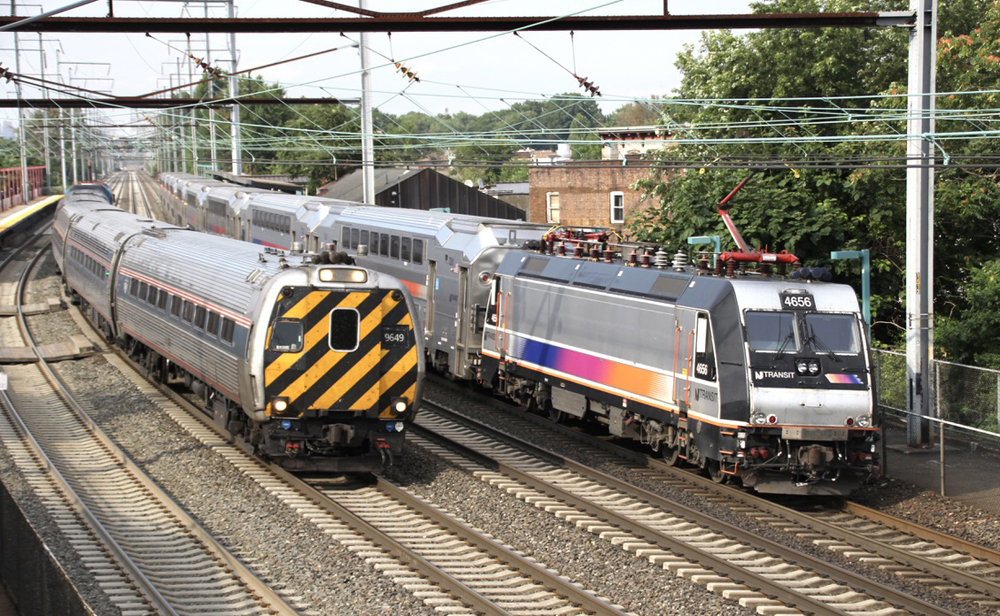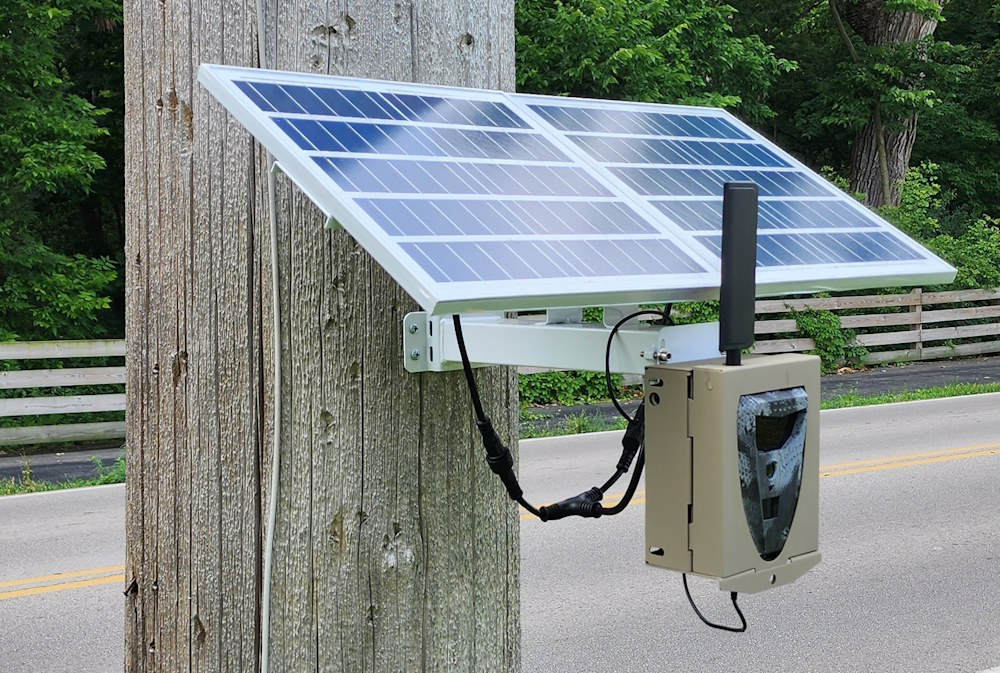Broadway Limited Imports continues to roll out N scale locomotives equipped with its Paragon3 Digital Command Control (DCC) sound decoder with Rolling Thunder. The latest addition to this line is a model of the most popular diesel locomotive ever offered by Electro-Motive Division, the SD40-2.
Broadway Limited’s Paragon3 decoders work with the firm’s Rolling Thunder subwoofer system to bring the rumble of standing trackside to model railroads. (Subwoofer system sold separately for $199.99 or $249.99, depending on speaker size.) Adding this capability to an N scale locomotive adds a lot to the experience of running trains. For more about BLI’s Rolling Thunder system, see my review of the BLI Paragon3 N scale F7 in the March 2019 Model Railroader.
The prototype. A version of the EMD SD40 updated with HT-C high-adhesion trucks and modular, solid-state control systems, the SD40-2 sold 3,945 units. Electro-Motive built these engines for 14 years, even after introducing higher-horsepower successors like the SD60.
Many are still in revenue service, the recipients of rebuilding programs – such as the prototype of our test sample, CSX no. 8043. Originally part of a 27-locomotive order built for Seaboard Coast Line in 1980, it received the YN3 scheme in 2002 and was renumbered 4020 after being converted to an SD40-3 in 2011.
Once-over. Our sample is an impressive- looking model. The side grills and exhaust fans have deep molded detail. The cab window frames have painted silver frames or black gaskets. The pilots feature separately applied plows and uncoupling levers. Though some grab irons and other details are molded on, the ones on the nose are separately applied. The flexible engineering plastic handrails are slightly thicker than the prototype, but look right to the eye.
The paint was smoothly and evenly applied, with crisp color separation between the blue and yellow, though to my eye the colors seemed slightly more muted than those on prototype photos. There were a few voids where the yellow CSX lettering crossed access door edges on the long hood. And all but the tiniest printing on the many warning stickers was legible under magnification.
All the dimensions I checked were within a few scale inches of those published on a scale drawing in Model Railroader Cyclopedia – Vol. 2 Diesel Locomotives (Kalmbach Books, out of print). The blackened metal wheelsets were in gauge. The Magne-Matic knuckle couplers were mounted from .02″ to .03″ high according to our gauge, but still coupled with various Micro-Trains cars we have around the office.
After removing the couplers and draft-gear boxes from both ends, I was able to remove the body shell. It was quite a tight fit, so getting it off required a lot of delicate wiggling and prying. Be careful when doing so, as the shell is connected to the decoder via several groups of thin lighting wires.
The decoder rests atop the die-cast metal frame, which surrounds the open-frame motor and its dual flywheels. The speaker is enclosed in the fuel tank. Light-emitting diodes (LEDs) illuminate the ditch lights via clear plastic tubes under the front porch.
On the test track. The model’s Paragon3 Digital Command Control decoder is dual-mode, meaning it can run under both DCC and direct current. I tested it first under DC.
Sound-equipped dual-mode DCC decoders typically take a lot of power to run under DC. That was certainly the case here. Our DC tests normally go up to 12V, but maxing out the power pack we typically use for these tests had the engine barely moving. I had to swap it out for a Model Rectifier Corp. power pack that could produce up to 15V.
The locomotive responded at 9.5V with the sounds of the 645E3C diesel motor’s start-up sequence. However, it didn’t start moving until the throttle reached 11V. At 14V the model reached 78 scale mph, exceeding the prototype’s 65 mph top speed. That’s not much of an operating range, especially if your DC power pack doesn’t go past 12V.
The directional headlights, ditch lights, and number boxes lit up automatically; the cab light turned on when the engine was moving slowly.
With a regular DC power pack, the only sounds that play are automatic ones – the diesel engine and a brake squeal.
Digital Command Control gave me more control over both the engine’s speed and its sound. At speed step 1, the engine rolled at 3.1 scale mph. At step 28, it zipped along at 91 scale mph, a lot faster than the prototype. After I programmed CV5 (Vmax) to a value of 70, speed step 28 produced a more prototypical top speed of 64 scale mph.
Realistic sound is always a problem with N scale locomotives, as small speakers just can’t produce the deep bass rumble of a locomotive engine. That’s what Rolling Thunder does. I hooked up the receiver to the subwoofer and plugged them both in. As I ran the locomotive back and forth on our test track, the subwoofer throbbed with the RPMs of the engine. The horn, likewise, shook the test bench.
With the function keys on our NCE ProCab, I was able to trigger sound effects including a coupler clank, air compressor, dynamic brake, and more. I was pleased that I didn’t have to remap function keys to ramp the prime mover revs up and down with F5 and F6.
The birth of modern power. Practi-cally every North American railroad of the late 20th century ran Electro-Motive Division’s SD40-2. Now, your N scale railroad can do the same, with a little extra in the sound department.
Manufacturer
Broadway Limited Imports
9 E. Tower Circle
Ormond Beach, FL 32174
www.broadway-limited.com
Era: 1972 to present (As decorated for CSX no. 8043: 2002 to 2011)
Road names: CSX (YN3 scheme); Atchison, Topeka & Santa Fe (blue-and-yellow freight bonnet); Burlington Northern (green and black); Canadian National (website scheme, one road number each with Illinois Central and Grand Trunk Western reporting marks); Chessie System (Baltimore & Ohio reporting marks); Conrail; Norfolk Southern (thoroughbred scheme); and Union Pacific (Armour Yellow and Harbor Mist Gray). Two numbers per scheme; also available undecorated.
Features
• Blackened metal wheels, in gauge
• Directional light-emitting-diode lighting
• Factory-painted wire grab irons
• Flexible engineering plastic handrails
• Magne-Matic knuckle couplers, mounted .02″ high per National Model Railroad Association standards
• Minimum radius: 9.75″
• Paragon3 Digital Command Control sound decoder with Rolling Thunder
• Weight: 3.1 ounces
• Working ditch lights





